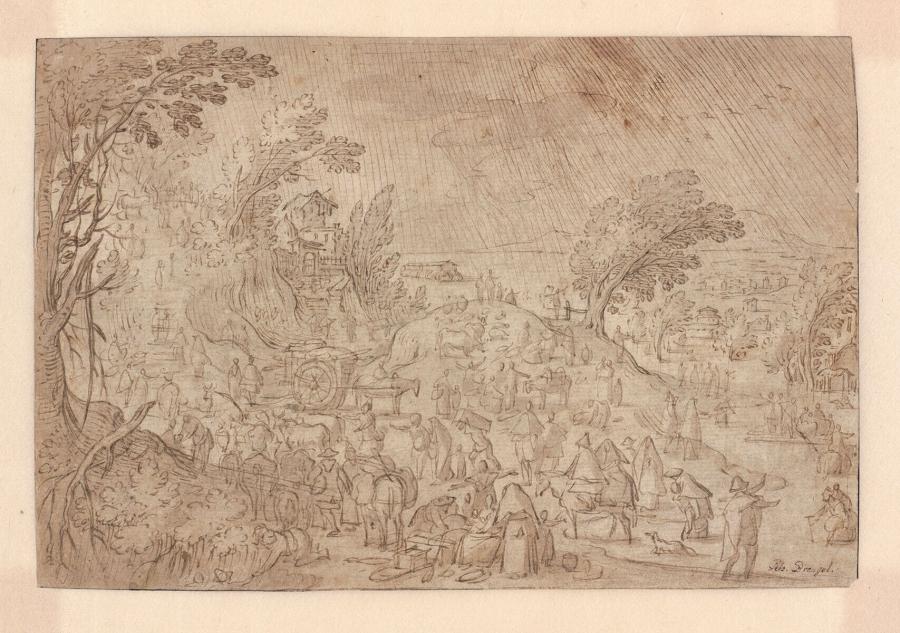Specifications
| Title | The Deluge |
|---|---|
| Material and technique | Pen and brown ink, grey and brown wash |
| Object type |
Drawing
> Two-dimensional object
> Art object
|
| Location | This object is in storage |
| Dimensions |
Height 185 mm Width 275 mm |
|---|---|
| Artists |
:
Giovanni Domenico Zapponi
Follower of: Gillis van Coninxloo (II) Previously attributed: Sebastiaan Vrancx Previously attributed: Pieter Bruegel (I) Previously attributed: Anoniem |
| Accession number | N 40 (PK) |
| Credits | Loan Stichting Museum Boijmans Van Beuningen (former Koenigs collection), 1940 |
| Department | Drawings & Prints |
| Acquisition date | 1940 |
| Creation date | in circa 1600-1610 |
| Inscriptions | 'Petr. Breugel.' (lower right, pen and brown ink), 'Peter Breugle' (verso, upper centre, pencil), '17 Q' (verso, upper centre, pen and brown ink), 'Peter Breugel' (verso, lower left, pencil) |
| Collector | Collector / Franz Koenigs |
| Mark | F.W. Koenigs (L.1023a) |
| Provenance | Achille Ryhiner; sale (Von Solms Braunfels et al.), Amsterdam (R.W.P. de Vries) 24-25.01.1922, lot 85 (as Pieter Bruegel the Elder) ; Franz W. Koenigs (1881-1941), Haarlem (L.1023a), as ‘Niederländisch, um 1600’, year of acquisition unknown; D.G. van Beuningen (1877-1955), Rotterdam, acquired with the Koenigs Collection in 1940 and donated to Stichting Museum Boijmans Van Beuningen |
| Research |
Show research Italian Drawings 1400-1600 |
| Literature | Faggin 1968, p. 85 (as Giovanni Domenico Zapponi); Faggin 2002, p. 279 |
| Material | |
| Object | |
| Technique |
Brown wash
> Washing
> Wash
> Drawing technique
> Technique
> Material and technique
Grey wash
> Washing
> Wash
> Drawing technique
> Technique
> Material and technique
|
| Geographical origin | Italy > Southern Europe > Europe |
Do you have corrections or additional information about this work? Please, send us a message























